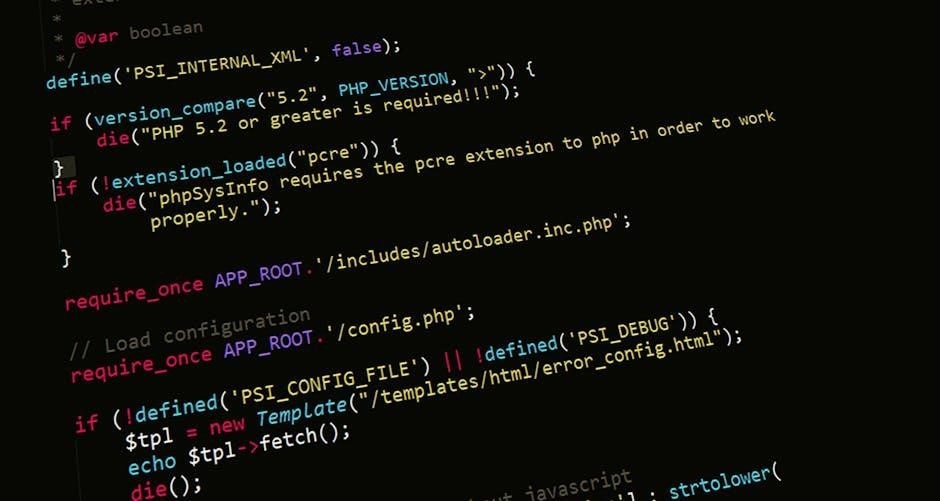Overview of Jordan Peele’s “Nope”
Jordan Peele’s “Nope” presents a compelling narrative involving siblings OJ and Emerald Haywood, taking over their family’s horse ranch after a violent anomaly.
Synopsis and Core Themes
After their father’s tragic death due to a violent anomaly, OJ and Emerald Haywood inherit the family horse ranch, grappling with its legacy and the challenges of wrangling horses for ungrateful filmmakers in the California desert. Discovering a UFO stalking the skies, they see an opportunity to escape their circumstances by capturing film history, leading them on a perilous journey.
Core themes of “Nope” revolve around spectacle, exploitation, and the human desire for validation through extraordinary events. The film examines the lengths people will go to capture and control the unexplainable, blurring the lines between awe and obsession. Family legacy plays a crucial role, explored through the Haywood siblings’ connection to their ancestral past and their struggle to redefine their future amidst extraordinary circumstances. The screenplay available for “Nope” offers a deeper exploration of these themes, allowing fans to closely examine the complexities of Peele’s storytelling.
Significance of the Title “Nope”
The title “Nope” serves as a direct, visceral reaction to the unfolding events within the film. It embodies a primal scream, a refusal to engage with the spectacle of the unknown, highlighting the characters’ initial instinct to avoid danger and the terrifying reality they confront.
Beyond a simple expression of fear, “Nope” also represents a challenge to the audience’s expectations and assumptions about the horror genre. It’s an acknowledgment of the absurdity and terror of the situation, a way for the characters to assert agency in the face of overwhelming dread. Furthermore, the title’s simplicity underscores the film’s exploration of spectacle, suggesting a critical perspective on humanity’s obsession with capturing and consuming extraordinary events, even at great personal risk. Examining the script reveals how this theme resonates throughout the narrative, informing character choices and driving the central conflict.

Availability of the “Nope” Script
The complete original “Nope” screenplay by Jordan Peele is available for download at 8FLiX. The script offers insights into Peele’s storytelling and character development process.
Official Script Releases and Where to Find Them
For fans eager to delve deeper into the cinematic world of “Nope,” access to the official script offers invaluable insights. Jordan Peele’s meticulously crafted screenplay is available through various official channels, providing a unique opportunity to examine the nuances of his storytelling.
One prominent source for the “Nope” script is 8FLiX, where you can download the complete original “For Your Consideration” (FYC) script. This version often includes specific formatting and notes intended for awards consideration, offering a glimpse into the professional context of the screenplay.
IndieWire also featured the full screenplay as an exclusive, allowing fans to closely examine the film’s narrative structure and themes. Such official releases ensure authenticity and provide the most accurate representation of Peele’s vision, making them essential resources for serious enthusiasts and film scholars alike.
Keep an eye on official studio websites and film-related publications for potential script releases related to awards seasons.
Unofficial Script Versions and Considerations
While the allure of obtaining a “Nope” script is strong, it’s crucial to approach unofficial versions with caution. Numerous websites and online forums may offer downloadable scripts, but their authenticity and accuracy can be questionable. These versions might be transcribed by fans or derived from early drafts, potentially containing errors or significant deviations from the final film.
Relying on unofficial scripts can lead to misinterpretations of character motivations, plot details, and thematic elements. Always verify the source and compare it with trusted resources to ensure its reliability. Fan-made transcripts, though enthusiastic, often lack the professional polish and accuracy of official releases.
Be aware that sharing or downloading copyrighted material, including unofficial scripts, may infringe on intellectual property rights. Stick to reputable sources and official channels to access the most accurate and legally obtained version of Jordan Peele’s “Nope” screenplay.
It is best to seek out officially released scripts to understand the nuances.

Analyzing the “Nope” Script
Analyzing Jordan Peele’s “Nope” script reveals key dialogue and character development; The script also sets the tone through exposition and setting. It provides a deeper look into the film.
Key Dialogue and Character Development
Examining the “Nope” script highlights the importance of dialogue in shaping character arcs and driving the narrative forward. Excerpts featuring Lil Jupe and others showcase how dialogue reveals personalities. Consider the exchange about Gordy’s birthday gift, demonstrating character dynamics and humor. The script’s dialogue helps to define OJ and Emerald’s relationship. Their conversations illustrate their individual strengths. This showcases their shared determination to protect their family legacy.
Key lines, such as those spoken by Mary Jo Elliot, add layers of depth to the supporting characters. They provide insight into their motivations and past experiences. Through carefully crafted dialogue, Peele develops characters. They are both relatable and complex. Examining the script’s dialogue provides a deeper understanding of the characters. It also illuminates the film’s central themes. It is imperative for interpreting the overall message.
Analyzing the script allows one to appreciate the nuances of character development. It also highlights the impact of each line on the audience’s perception of the Haywood siblings.
Use of Exposition and Setting the Tone
The “Nope” screenplay effectively utilizes exposition to establish the setting and tone. It also introduces key concepts early on. The script sets a suspenseful atmosphere, drawing the audience into the narrative. The opening scenes, describing the Haywood family ranch and the strange events occurring, establish the film’s eerie tone.
The script uses exposition to explain the Haywood family’s legacy. It also explores their connection to the history of cinema. This background information enriches the viewing experience and adds layers of meaning. The script sets the tone through vivid descriptions of the California desert. It also builds tension as the characters uncover the presence of a UFO.
Analyzing the script reveals how Peele masterfully uses exposition to create a sense of mystery. It is essential to understanding the film’s themes. The script establishes the tone effectively through subtle hints and foreshadowing. It keeps the audience engaged and eager to uncover the truth behind the unexplained phenomena.

Themes and Motifs in the Script
The script of “Nope” delves into themes of spectacle and exploitation. It also examines the Haywood family’s legacy. These elements enrich the narrative and provide depth to the story.
Exploration of Spectacle and Exploitation
Jordan Peele’s “Nope” intricately explores the themes of spectacle and exploitation, revealing how individuals and communities can be consumed by their desire to witness and profit from extraordinary events.
The script highlights the inherent dangers of turning life-altering moments into mere entertainment, often at the expense of those directly affected. The characters’ pursuit of capturing the unidentified flying object reflects a broader societal obsession with documenting and commercializing the unusual.
This pursuit blinds them to the ethical implications and potential consequences of their actions. The narrative suggests that the insatiable appetite for spectacle can lead to exploitation. It can even lead to self-destruction, as characters prioritize capturing the “perfect shot” over personal safety and moral considerations.
Peele uses the film’s events to critique the media’s sensationalism and the public’s eagerness to consume sensationalized content, ultimately questioning the value and impact of turning real-life experiences into spectacles. This creates a thought-provoking commentary.
The Haywood Family Legacy
The script of “Nope” deeply explores the Haywood family legacy. It emphasizes their historical significance in Hollywood as Black horse wranglers, a heritage often overlooked and unacknowledged by the mainstream film industry.
OJ and Emerald’s struggle to maintain their family ranch underscores the challenges of preserving their ancestral traditions in a rapidly changing world. The script emphasizes the importance of recognizing and honoring the contributions of marginalized communities to the entertainment industry’s history.
The Haywood family’s connection to the first motion picture, featuring a Black jockey on horseback, adds a layer of historical weight to their story. The script uses this legacy as a foundation to explore themes of cultural appropriation, erasure, and the reclamation of narrative control.
The siblings’ journey is not only about survival but also about restoring their family’s rightful place in cinematic history. This reaffirms their commitment to preserving their heritage for future generations.

Script vs. Film: Key Differences and Interpretations
Analyzing the “Nope” script reveals differences from the final film. Edited scenes, visual elements, and sound design choices impact the audience’s interpretation and overall experience.
Edited Scenes and Deleted Content
The journey from script to screen often involves the removal of scenes and content, and “Nope” is no exception. Examining the script reveals elements that didn’t make the final cut, offering insights into the creative process. These deleted scenes might have provided additional context or character development. Analyzing these changes allows us to understand the director’s choices in pacing and focus. Certain scenes might have been deemed redundant or detracted from the central narrative.
The script might contain extended dialogue or alternate versions of key moments. Comparing the script and the final film allows viewers to see how themes were emphasized or downplayed through editing. Deleted content can also shed light on subplots or character arcs that were ultimately streamlined for a more concise viewing experience. For example, some scenes might have been cut for pacing.
Impact of Visuals and Sound Design
The “Nope” script provides a foundation, but the film’s impact is significantly enhanced by its visuals and sound design. The screenplay can only suggest the scope of the spectacle, while the film delivers it with stunning imagery. Sound design is crucial in building tension and creating an unsettling atmosphere, something the script can only hint at.
Visual cues, such as the alien entity’s unique form, are realized through special effects, heightening the terror. Sound effects, including the creature’s eerie sounds, contribute to the overall sense of dread. The film’s visual and auditory elements work together to create an immersive experience that goes beyond the script’s descriptions. The combination is crucial for the final film’s success and emotional resonance with the audience.

Leave a Reply